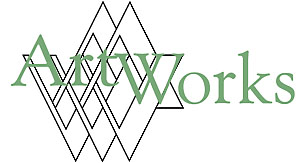|
An interview with Denise
Giardina
ADA: Becoming Accessible
From the Director
A convergence of printmakers and
potters
Monoprints of Barbara Marsh
Wilson
Interview with Mark Wolfe
Fiber artists share
Other news
|
From the director
Support of art and artists
Periodically, direct support of individual artists
with public funds has generated controversy at the local, regional
and national levels, both in the U.S. and abroad. The National
Endowment for the Arts (NEA), following challenges to its purpose,
even existence, a decade ago, is prohibited from making direct
grants to artists. Arts administrators, college and university art
professors, and, naturally, the artists themselves generally regard
this change as unfortunate. Previous grants to individual artists
helped to complete significant works in the many arts
disciplines.
The West Virginia Commission on the Arts continues
to make awards to individual artists in two principal grant
categories: Professional Development and the West Virginia Artist
Fellowship Grant Program. The former provides resources to help
artists achieve advancement to a “next step of artistic
growth.” The latter recognizes excellence in artistic
work.
Some economic theories would argue against any
public support for the arts by suggesting that the arts should be
subject to the same “survival of the fittest” test of
any enterprise in the marketplace. Proponents of public support
contend that, without it, art forms that represent long cultural
development or new art forms that do not yet enjoy popular success
would be unavailable to students and community audiences.
In fact, many enterprises in the marketplace
receive subsidy. State, county and municipal governments provide
tax abatements to encourage economic development. Public funds pay
for infrastructure such as roads and utilities to create incentives
for corporations to choose one location over a competing one.
A West Virginia artist was recently quoted,
“I know the public does not owe me a living.” However,
counties, cities and states have found that the presence of artists
contributes to an environment that offers educational opportunities
for children. The arts are also an important part of the attraction
for tourists.
Recognizing the value of aesthetic enjoyment is a
matter of experience, not an innate capacity possessed by some
persons and lacking in others. The human capacity to appreciate the
world through the senses is generously distributed, as demonstrated
by the near-universality of decorative arts and musical
cultures.
In recent years, approximately six percent of the
grant funds available each year from the West Virginia Department of Arts, Culture and History for arts programming projects have gone to
individual artists. In more generous economic times, it would be
desirable to increase the investment in the state’s
artists.
Several years ago Anne Focke made a report to the
NEA titled: Financial Support for Artists: A Study of Past and
Current Support with Reflections on the Findings and
Recommendations for Future Action.
Ms. Focke suggested among her findings that there
is reason to:
- understand and talk about artists’ work as
an asset that contributes to the society around them, rather than
to just understand and talk about artists’ survival and
needs;
- figure out what we can do with our own resources
and within our own communities or areas of interest and get on with
the business of doing it;
- encourage the exchange of ideas about ways that
artists and cultural workers sustain their lives or “get a
living” in the context of their various roles in the world at
large;
- engage with fields other than the arts to develop
relationships with commercial “creative industries,”
that is, industries based on the work of creative artists;
- through collaborations, build a collective
constituency that is large enough to become a political force;
- find a source of energy that does not rely on a
sense of crisis. (Running on the fuel of one “crisis”
after another is exhausting, seems likely to foster shallow
argument, and probably can’t be sustained in any case. The
big things won’t change quickly. A powerful source of the
energy we need is specific or local activity well-anchored in many
different places.)
Investment in individual artists is more a social
commitment than a handout to a single person. We do it for
“us” more than for “them.” Society wants to
emulate what artists live — expressiveness, creativity,
independence and innovation.
To make the case for the support of artists, arts
programming and arts facilities in our communities, we must develop
a voice for arts advocacy. That voice will be too small to be heard
if it comes only from artists, or from arts managers with the
self-interest of employment. If you are an artist or if you are an
advocate of the benefit of the arts to education, to cultural
understanding, to economic development — spread the word and
gain the ear of decision-makers at the local, regional, state and
national level.
Richard Ressmeyer, Director of Arts
|

